Thinking of getting a lovebird? Good choice! These small and colorful parrots can make fantastic pets. All types of lovebirds belong to the genus Agapornis, which contains a total of nine different species. Some are common in aviculture, others not so much.
Let’s have a look at all 9 types of lovebirds, from the most popular to the rarely spotted and elusive species!
What is a lovebird, anyway?
As mentioned in the intro, all lovebirds belong to a small genus of parrots called Agapornis. All nine types of lovebirds within this genus are naturally found in Africa, although their exact spread and habitats vary. They eat fruit, seeds, farm crops, insects and more.
Some lovebirds are extremely popular in the pet trade. I’d wager to say they’re definitely in the top 5 of pet birds! However, there are still a lot of myths out there about their care. Unfortunately, being so popular also means that lovebirds are often subjected to bad diets, small cages and improper handling.
Lovebirds that are denied nutritious food, enrichment and social contact can become depressed and aggressive. They may start to pluck their own feathers, make non-stop noise or become apathetic. They can even become bitey.
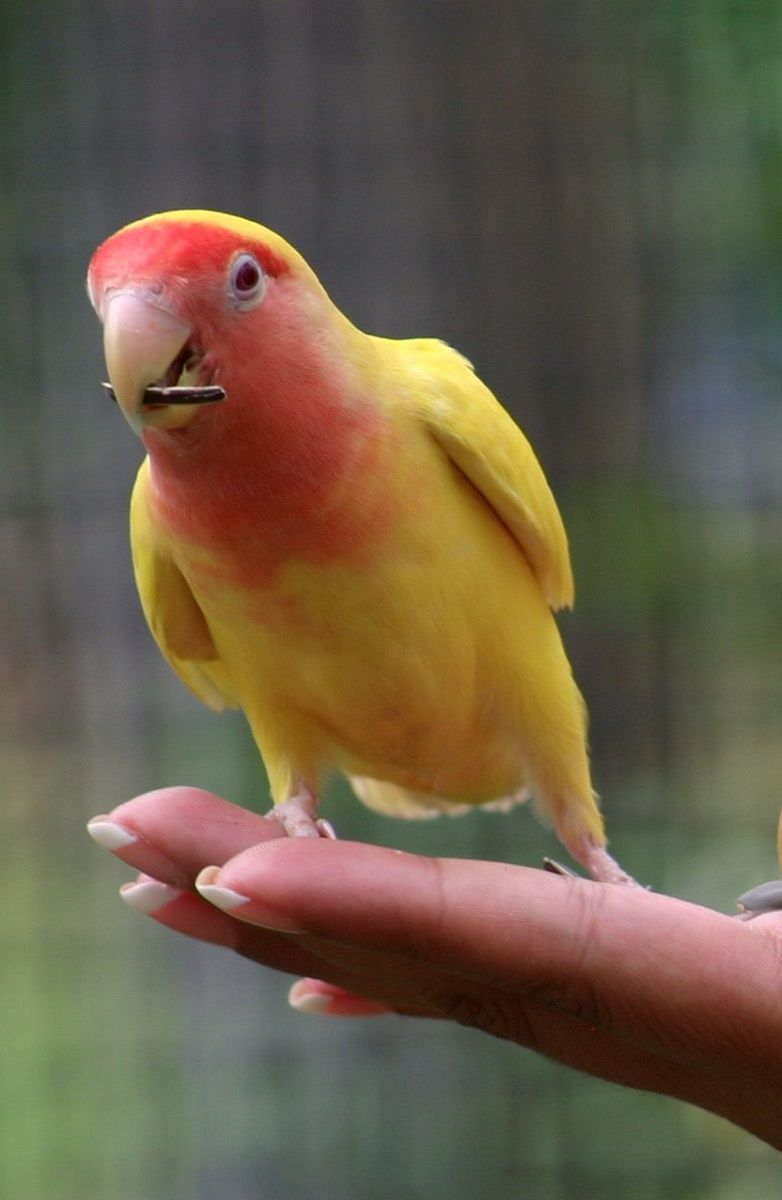
If you’d like to keep an Agapornis, or any parrot for that matter, be sure to do your research so that you know what your new feathered friend will need to thrive. They can live for 20 years or more, so you need to be willing to commit for a long time. These are intelligent creatures that need your love and attention.
I’ll link to the specific care guides for species that have one as we discuss them.
Did you know? Lovebirds were named for the strong bonds that mated pairs form. It’s even sometimes said that an Agapornis will die if its mate passes away! This is actually not usually true. Although lovebirds are monogamous and the passing of their mate can affect their health, they don’t necessarily form stronger bonds with their mates than other parrot species do.
Agapornis fischeri (Fischer’s lovebird)
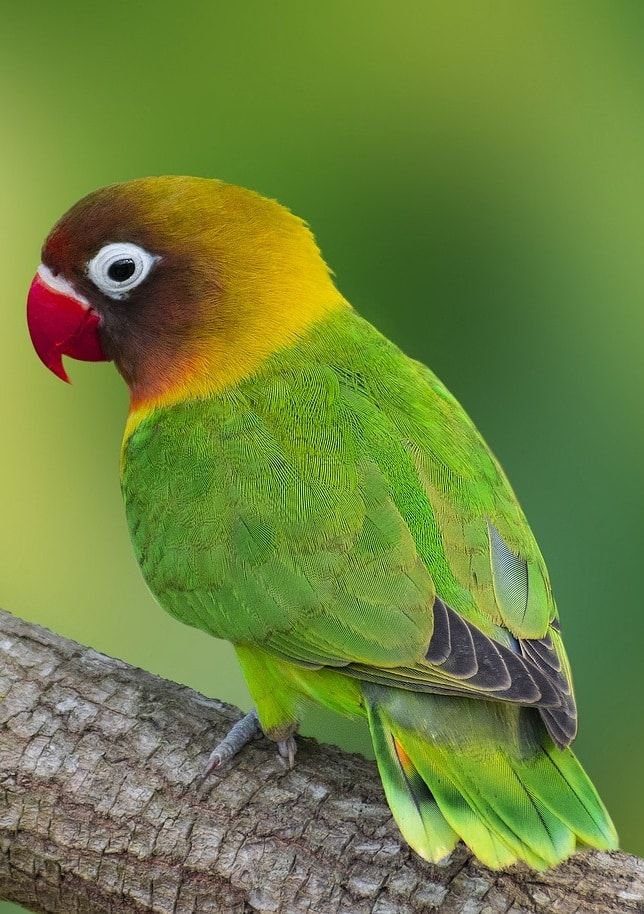
Let’s start with one of the more popular types of lovebirds in the pet trade: Agapornis fischeri, better known as the Fischer’s lovebird. This one’s part of the eye-ring group of lovebirds, which contains a total of four species that have distinctive white rings around their eyes. We’ll discuss the other three below.
The Fischer’s lovebird is naturally found on the African savannah in Tanzania, where it survives off grass and tree seeds. Feral populations can also be found in a bunch of different places, from Florida all the way to France and Portugal. Despite this, the species is considered Near Threatened in its natural habitat by the IUCN.
As a pet, Agapornis fischeri is appreciated for its lovely coloration, intelligence and loyalty. They’re fun to be around and can even be cuddly, but are also feisty and sometimes described as little drama queens. They learn tricks easily.
Selectively bred varieties can lack the green (lutino) or they may be a completely different color, like blue or even white (albino).
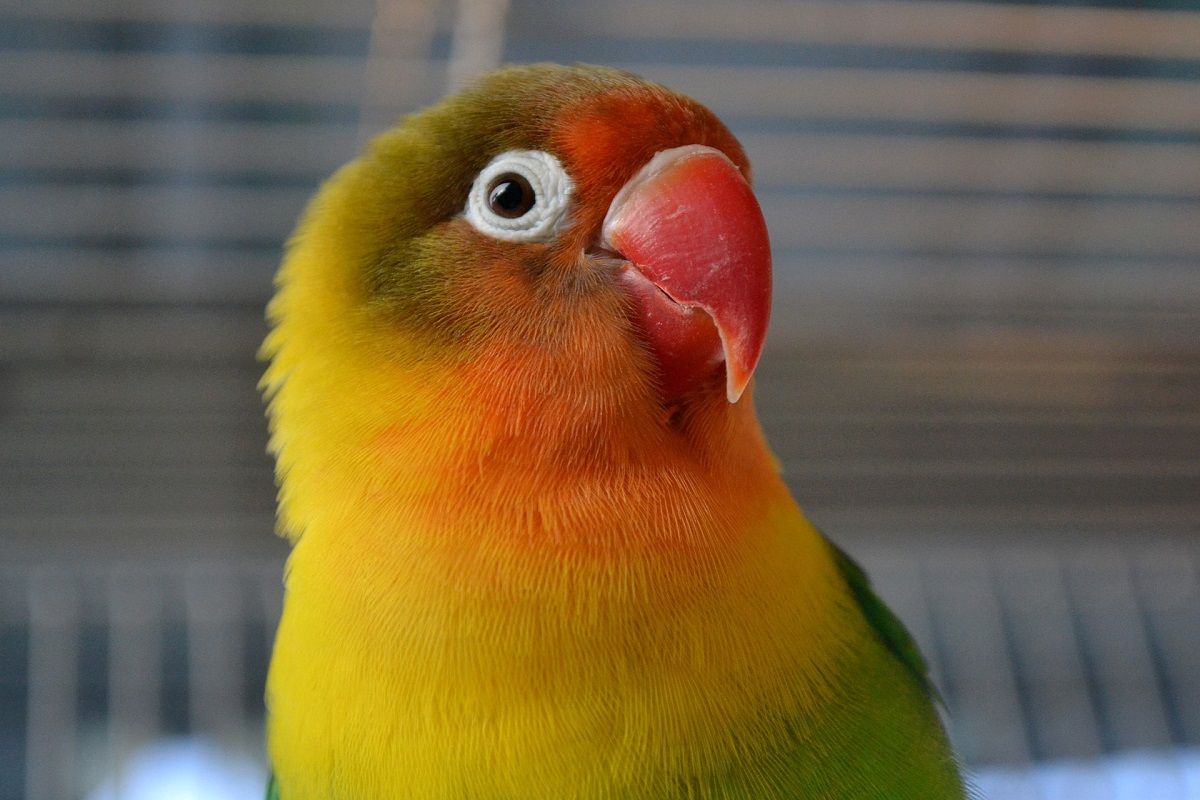
Fischer’s Lovebird | Agapornis fischeri Care & Info
Looking for a small parrot with lots of personality to add to your family? If you settled on the colorful Fischer’s lovebird (Agapornis fischeri), that’s not surprising. These African birds …
Read moreAgapornis personatus (yellow-collared lovebird)

Another popular lovebird species in the eye-ring group is Agapornis personatus, also known as the yellow-collared lovebird or masked lovebird. This one’s easy to recognize in its wild form from its entirely black head, yellow chest and neck, green wings and bright red beak.
Like the Fischer’s lovebird, Agapornis personatus is naturally found in the Tanzanian savannahs, like the Serengeti. Here, it eats seeds like wild millet and Acacia, and nests in hollow trees. Like its cousin, it’s also invasive in some places, including populations in Arizona and France.
In aviculture, the yellow-collared lovebird is appreciated for its typical lovebird personality. It possesses that golden combo of feistiness and love of attention! These guys can be cuddly and social, but also dramatic and even nippy without the right socialization. You’ll never be bored with a personatus in your home.
Selectively bred colors of Agapornis personatus include blue (with a skin-colored beak), lutino (no black), olive, pied and much more.
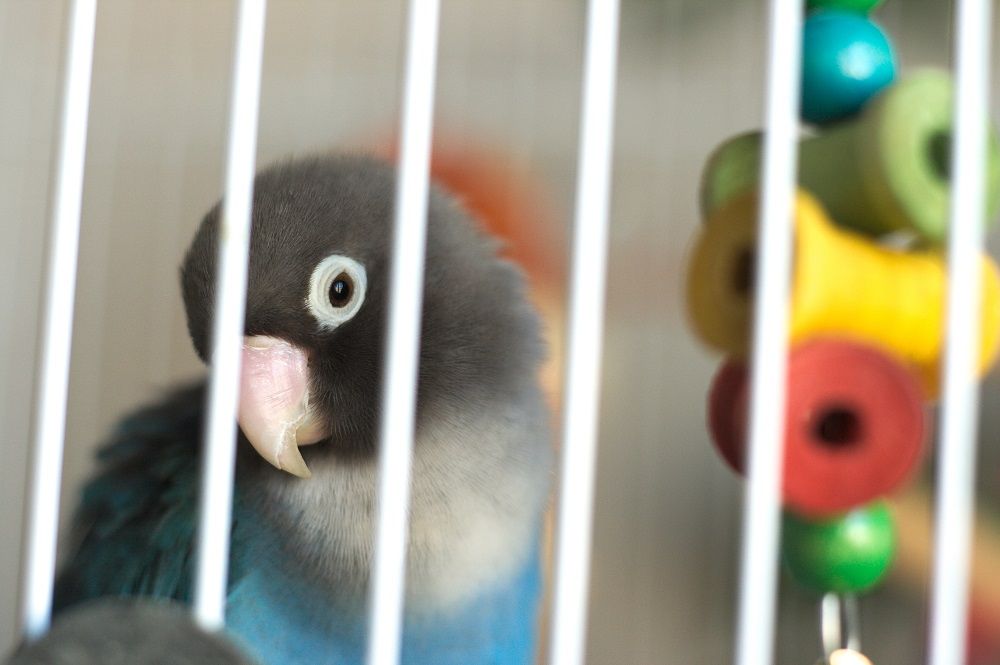
Yellow-Collared Lovebird Care & Info | Small Parrot, Big Attitude
Looking to add a lovebird to your family? It’s easy to fall in love with the yellow-collared lovebird (Agapornis personatus). Their beautiful colors and small size make them very handsome …
Read moreAgapornis nigrigenis (black-cheeked lovebird)
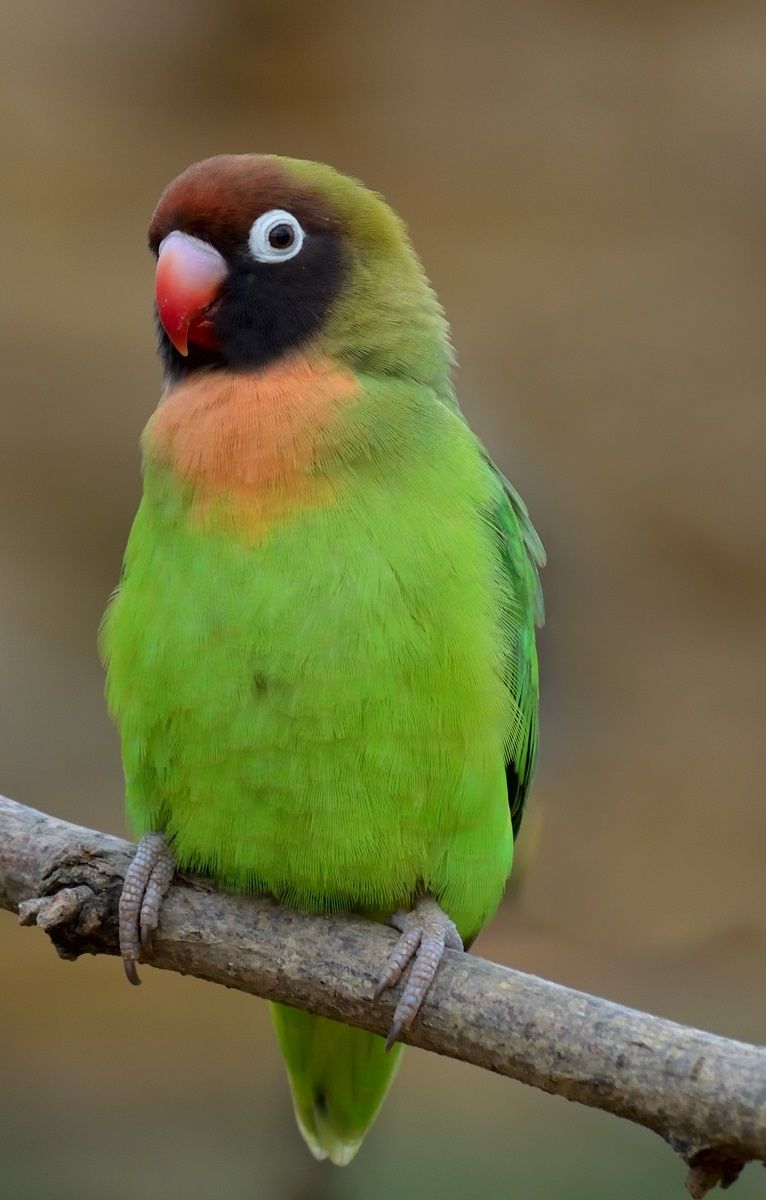
Are you seeing double? Nope! Agapornis nigrigenis, the black-cheeked lovebird, does look quite similar to its fellow eye-ring cousin Agapornis personatus. However, there are differences: most notably, black cheeks completely lack that typical yellow neck coloration. Instead, they have a little orange chest “bib”.
Naturally found in a small region in Zambia, where it occurs in forested regions, this species is unfortunately categorized as Vulnerable by the IUCN. Populations are decreasing, and it’s likely there are less than 10,000 individuals left in the wild. Threats include trapping, habitat loss, climate change, water management and more.
The black-cheeked lovebird is a lot less common in aviculture than the aforementioned two species. They apparently breed easily enough, but never really caught on as pets.
It’s unlikely to happen now given how few there are left, although some people do keep them. There are even a few selectively bred color variations, like blue and lutino, which are sometimes difficult to tell apart from Agapornis personatus.

Black-Cheeked Lovebird | Agapornis nigrigenis parrot profile
The black-cheeked lovebird, scientifically known as Agapornis nigrigenis, is a fascinating and colorful bird species native to southern Africa. Despite its charming personality and eye-catching looks, this lovebird isn’t commonly …
Read moreAgapornis lilianae (Lilian’s lovebird)

Here’s another confusing one for you. Agapornis lilianae, the Lilian’s lovebird or Nyasa lovebird, looks pretty similar to the previously mentioned Agapornis fischeri. In fact, fischeri variants with no brown on the head (and yes, there are a few of those thanks to selective breeding) can look almost identical!
The main way to distinguish between the two is by the fact that Lilian’s lovebirds are not among the more common types of lovebirds in aviculture. Some of the more dedicated Agapornis enthusiasts do keep them, but you won’t see one at your local pet store.
These lovebirds are apparently not too easy to breed. Since they’re already considered Near Threatened in their natural habitat, they’re probably not going to become more popular any time soon.
One of the smaller lovebirds at a maximum length of around 13 cm/5″, Agapornis lilianae is naturally found in parts of Zambia, Malawi, Mozambique, Zimbabwe and Tanzania. Here, it inhabits forested or savannah-type habitats and mainly eats grass seeds.
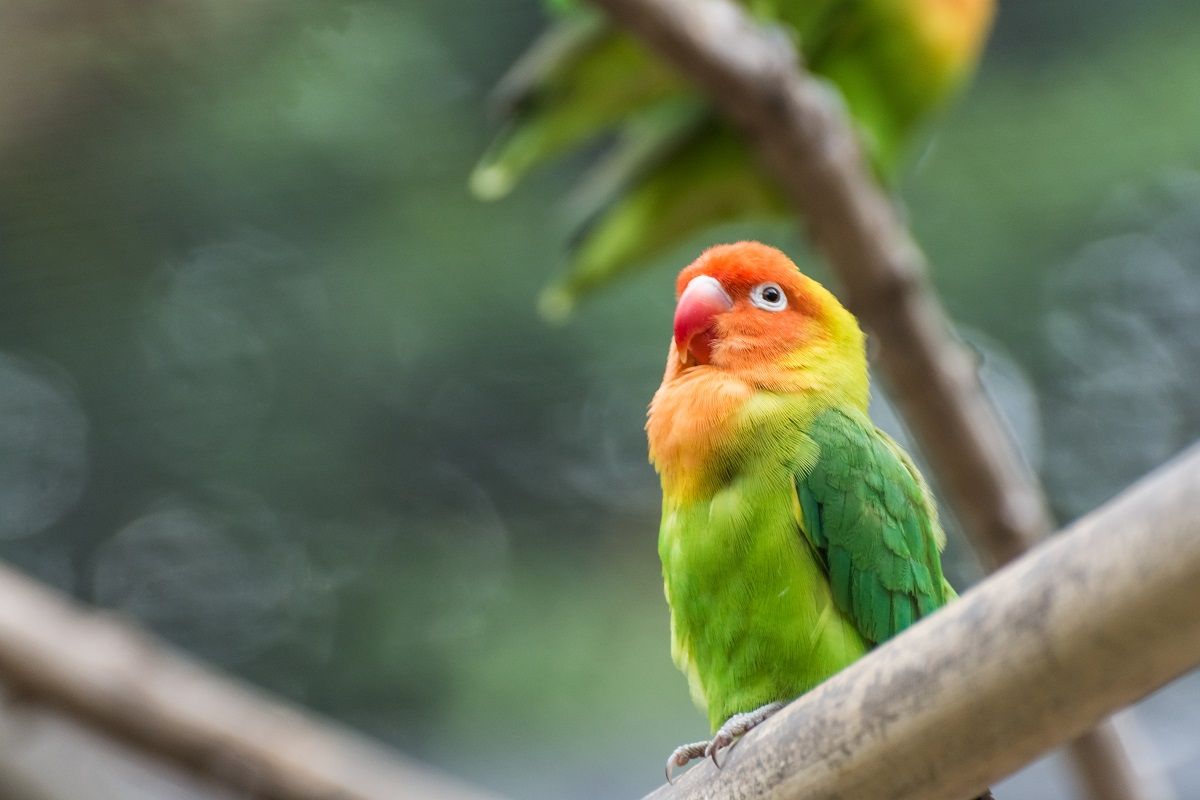
Lilian’s Lovebird | Agapornis lilianae parrot profile
If you’re a parrot enthusiast, you’ve probably heard of popular lovebird species like the rosy-faced lovebird and Fischer’s lovebird. But did you know there are other, less common lovebird species? …
Read moreAgapornis canus (grey-headed lovebird)
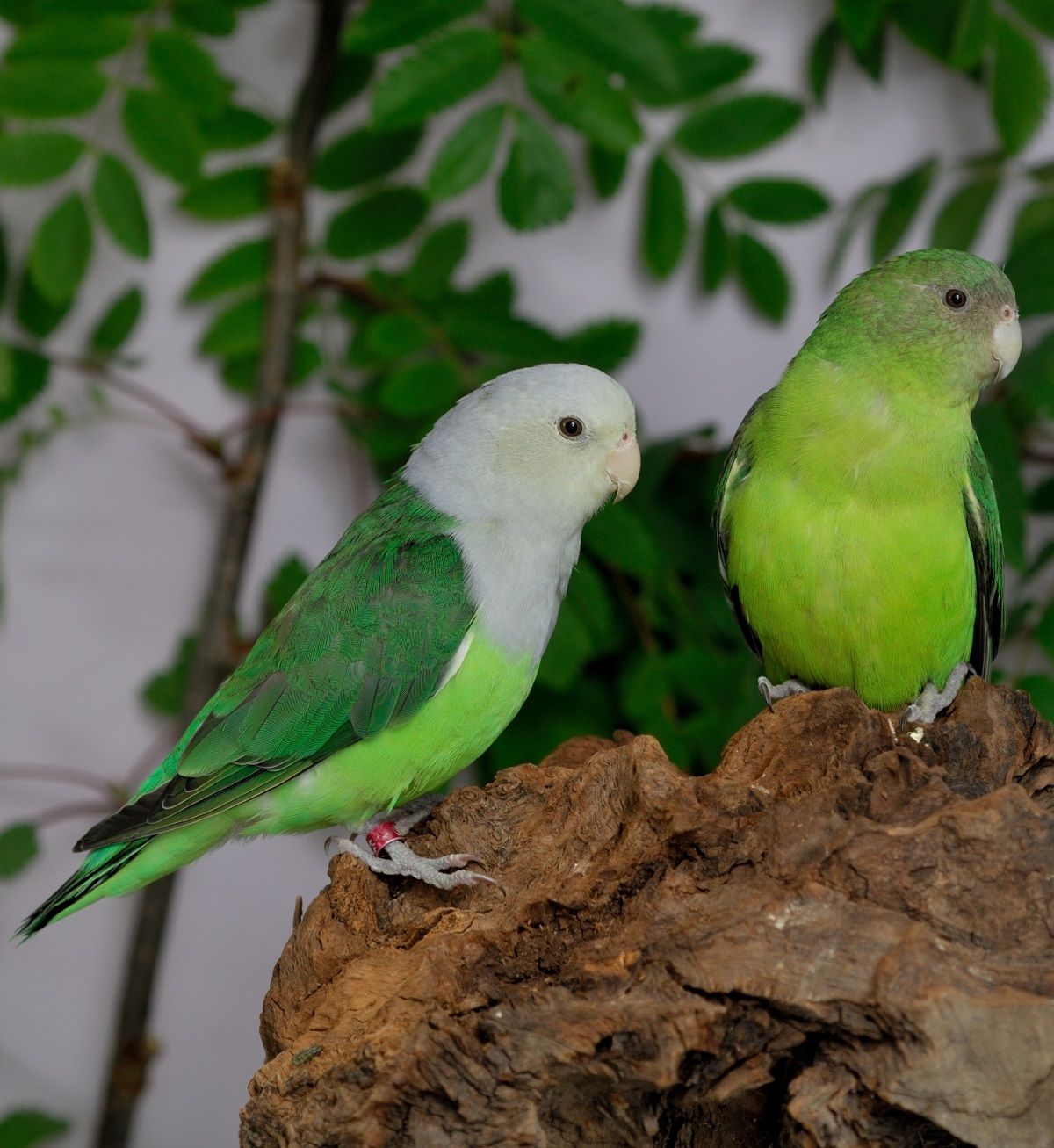
Let’s leave the eye-ring lovebirds behind and move on to the only Agapornis species that doesn’t inhabit the African mainland, the grey-headed lovebird. Scientifically known as Agapornis canus, its other common name is Madagascar lovebird, so I don’t think it’s too hard to guess where this species is from!
On the large island of Madagascar, this lovebird can be found living around forest edges, palm-dotted grasslands and agricultural zones. It’s not all too shy in its natural habitat, but it’s not very popular as a pet except with dedicated lovebird aficionados. In captivity, these birds are noted to be nervous and hard to breed.
As you can see in the photo below, males and females of the grey-headed lovebird are easy to tell apart. Only the male has the typical grey head that these small parrots (among the smallest of the lovebirds) were named for!
Although this lovebird is sometimes trapped for the animal trade, it’s currently considered to be a species of Least Concern whose population is Stable by the IUCN Red List.
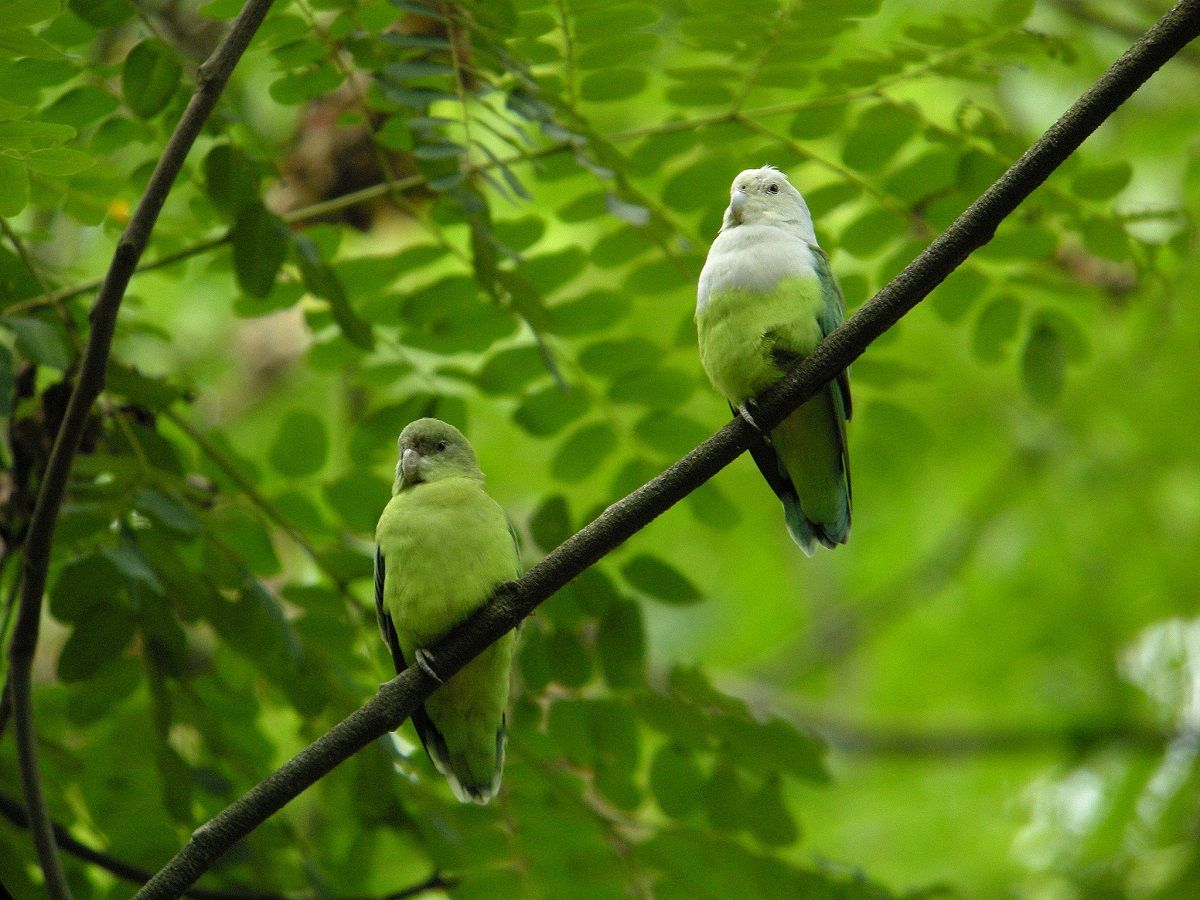
Grey-headed Lovebird Profile | A Shy Madagascan Parrot
The grey-headed lovebird, also known as Madagascar lovebird, is one of the smallest parrots of the genus Agapornis. They’re rarely seen in aviculture, and even hand-fed birds of this species …
Read moreAgapornis taranta (black-winged lovebird)

The bright green, red-beaked Agapornis taranta is also known as the black-winged lovebird or Abyssinian lovebird. It’s the largest of the lovebirds at a length of up to 17 cm/6.7″, but it’s not very common as a pet.
The black-winged lovebird is naturally found in highland habitats in Eritrea and Ethiopia, where it dwells in forests. It’s also sometimes seen in lower-altitude savannahs, but the species is not quite as common there. It eats wild figs, juniper berries and also sometimes farmers’ crops.
This is one of the types of lovebirds that shows sexual dimorphism, or visual differences between males and females. The male’s underwings are usually a deeper black in color, and, more notable, it sports a bright red forehead that the female lacks.
This species is considered by the IUCN to be of Least Concern. The population is noted to be on the increase.
Agapornis pullarius (red-headed lovebird)
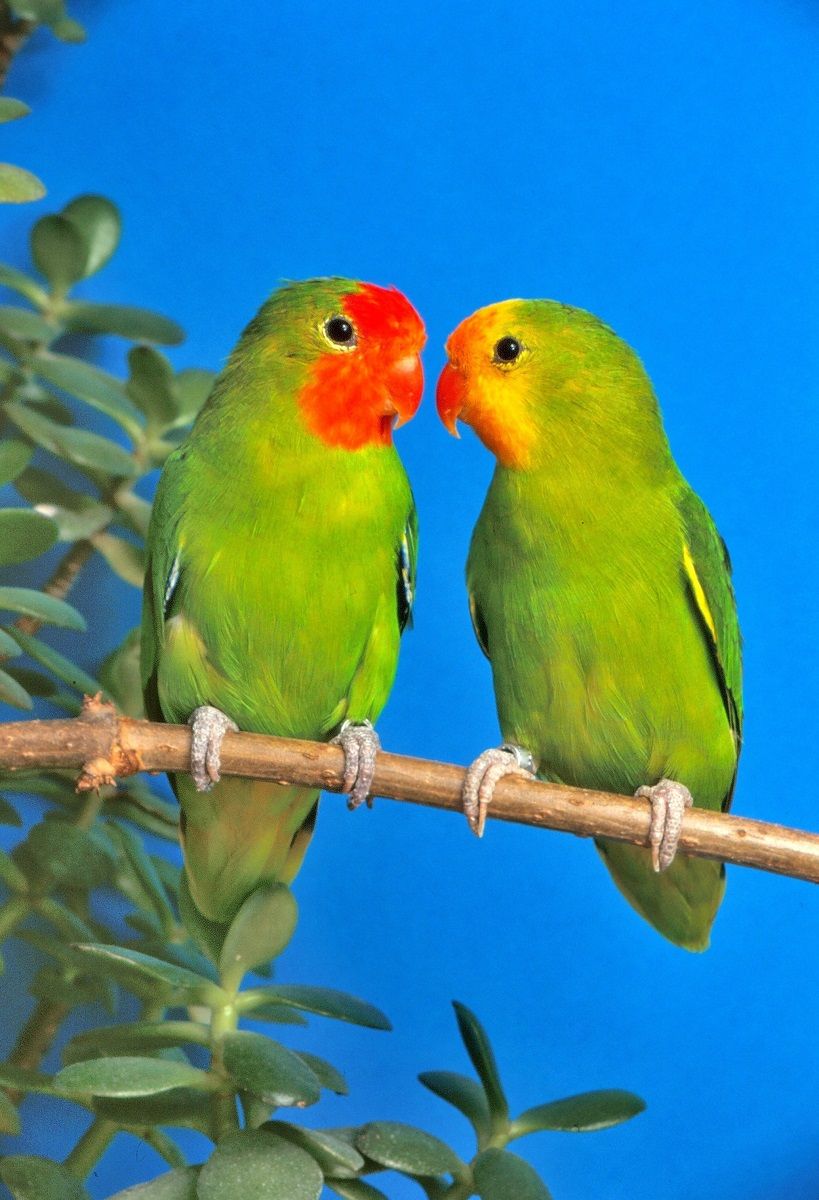
At first glance, Agapornis pullarius, also aptly named the red-headed or red-faced lovebird, looks pretty similar to the black-winged lovebird we just mentioned. The males of both species sport the typical red forehead, but you can tell them apart by the fact that the color extends a good bit further on A. pullarius.
Unlike some of the other Agapornis species, the red-headed lovebird has a pretty wide natural range in the tropical western and central parts of Africa. It can be found from Guinea and Sierra Leone in the west all the way to Tanzania in the east. It prefers moist lowland savannah, half-open zones and agricultural lands.
This species, too, shows pretty obvious sexual dimorphism. It’s the males that have the typical bright red face, whereas the female sports more faded orange face coloration and a less brightly colored beak.
Although the IUCN Red List considers Agapornis pullarius to be a species of Least Concern, it does note that the population looks to be decreasing.
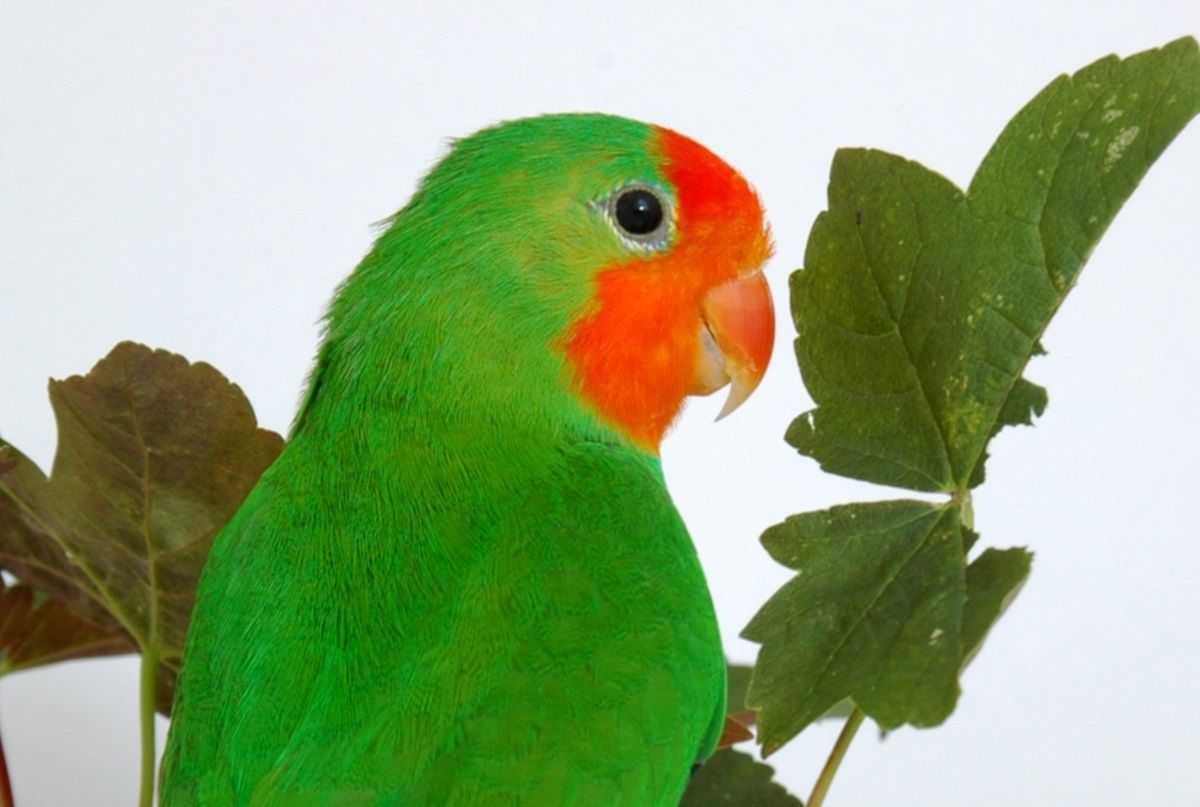
Red-Headed Lovebird Parrot Profile | The “Lesser-Known” Lovebird
Here’s a parrot you may not have heard of before: Agapornis pullarius, more commonly known as the red-headed lovebird. Unlike some other lovebirds, which are among the most popular pet …
Read moreAgapornis swindernianus (black-collared lovebird)
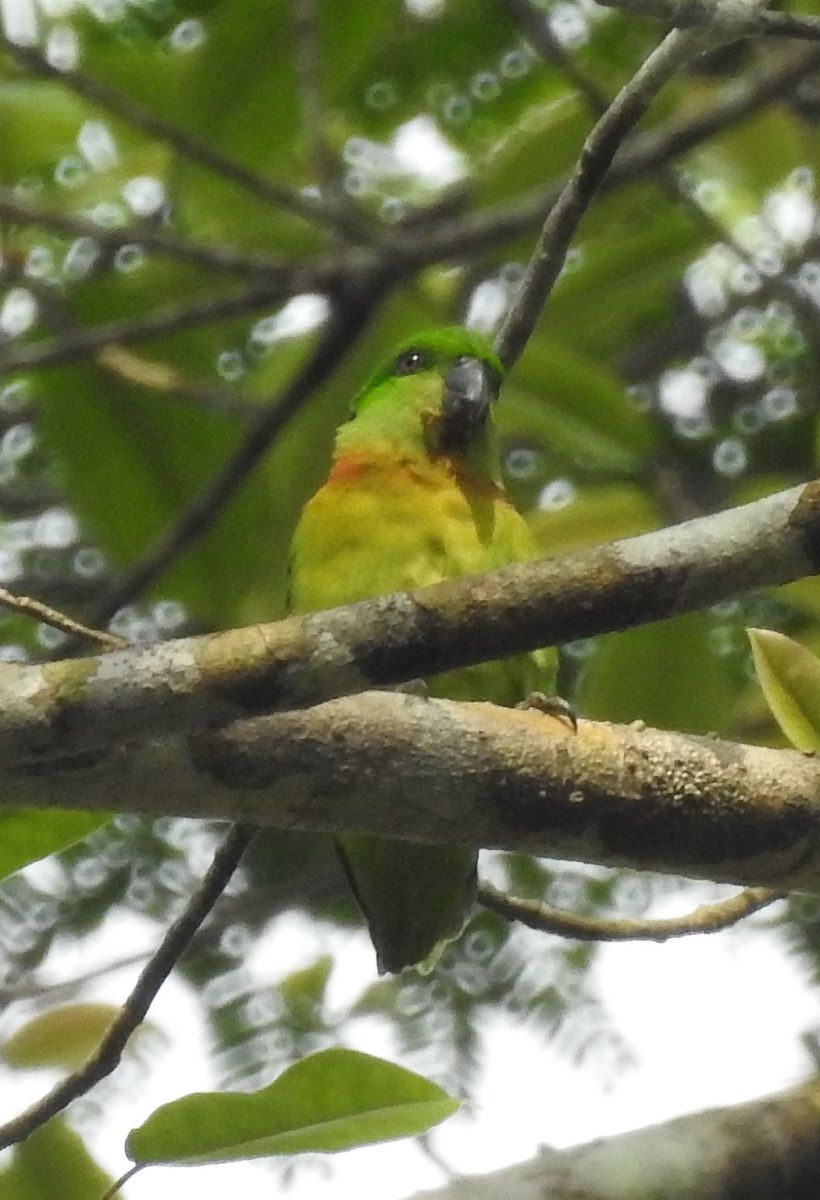
Agapornis swindernianus is not common in aviculture at all. Combine this with it being shy in its natural range, and this is not a bird you’ll see very often! My difficulty finding a clear photo of it only confirms this, but luckily a helpful iNaturalist user published one that I could use under a CC license.
This species can be recognized from its green base color and blackish beak. It also has a black half-ring on the back of its neck, which is what lent this Agapornis its common name: black-collared lovebird.
The main reason for the rarity of the black-collared lovebird in captivity is noted to be its native diet. It has evolved to eat certain species of native figs pretty much exclusively. Although it will also go for seeds and corn sometimes, that’s apparently not enough to sustain them in the long run.
The black-collared lovebird is considered a species of Least Concern by the IUCN, with a decreasing population. This being said, these birds are so difficult to spot that it’s probably difficult to figure out much more!
Agapornis roseicollis (peach-faced lovebird)
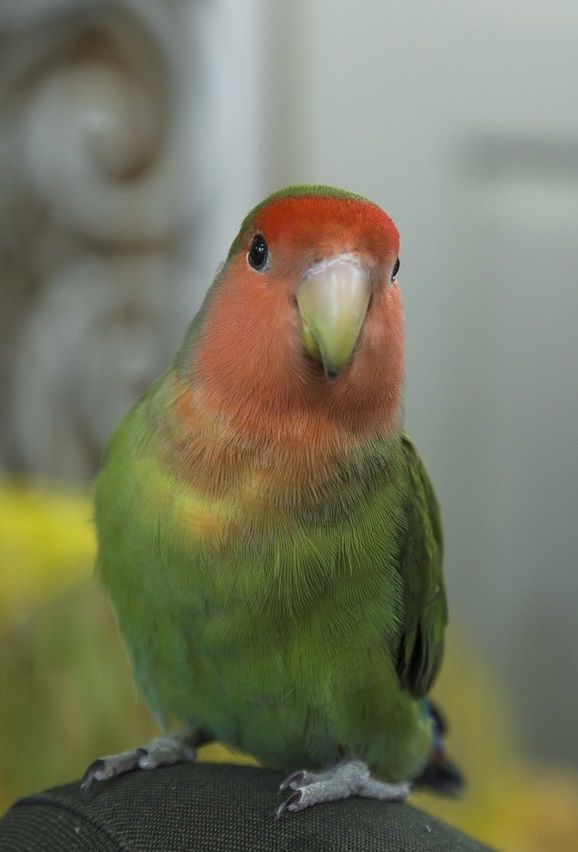
Bet you were wondering when I was going to discuss this one! In order to go out with a bang, here’s what’s probably the most common lovebird species of them all, at least as a pet. Its scientific name is Agapornis roseicollis, although it’s better known as the peach-faced or rosy-faced lovebird.
Agapornis roseicollis is naturally found in southwest Africa, from Angola down to northern South Africa. It does well in arid habitats from deserty steppes to savannah and more covered woodlands.
The wild form of peach-faced lovebird is easy to recognize. It’s bright green aside from a large splotch of orange on the face and upper chest, as well as some blue feathers in the tail. Its beak is horn-colored and there’s no sexual dimorphism between males and females.
This being said, its huge presence in aviculture has led to loads of different color mutations of peach faces showing up. Birds that have yellow bodied instead of green are pretty common. There are also blue, white-faced and many other variations.
Rosy-faced lovebirds make great little companions and can be wonderful pets. They’re very social, intelligent and tend to love hanging out with their owners if they’re properly tamed.
A word about hybrid lovebirds
Because they’re members of the same genus, many of the lovebird species can interbreed. Sometimes the offspring is fertile, like if two eye-ring lovebirds mate, but sometimes they’re not, like in the case of an eye-ring to non-eye-ring union.
Some of the Agapornis species’ habitats naturally overlap a little, which means that hybridization may sometimes occur in nature. It has been suggested that this will happen more and more as lovebirds’ natural habitats are affected by human activity. They can be inadvertently brought closer together, with the risk of muddying the gene pools.
About Agapornis fischeri, for example, the IUCN mentions:
It remains unclear whether the destruction of woodland, that had previously separated the two species, has led to the two taxa encountering each other more often and leading to hybridisation (R. Wirth in litt. 2015).
IUCN Red List, Agapornis fischeri
In aviculture, hybridization of different Agapornis species is sometimes done on purpose. Breeders like how it allows them to mix different colors and patterns in a way that’s not possible within one parrot species.
Some lovebird keepers view these types of lovebirds as the result of irresponsible breeding. Part of this is because breeders sometimes blatantly lie about it. On top of that, it’s said to muddle the gene pool and sometimes even cause health issues.
The African Lovebird Society of Australia has a good article with more about hybrid lovebirds.

Frequently asked questions
Yes, lovebirds are considered to make good pets for people who don’t mind a bit of noise. They do have some specific care requirements, so you should do your research before obtaining one.
In the wild, there are few specimens of black-cheeked lovebird left. In captivity, the rarest lovebird is likely Agapornis swindernianus, the black-collared lovebird.
If you have any more questions about the nine different types of lovebirds or if you want to share your own experiences with the fascinating genus Agapornis, don’t hesitate to leave a comment below!
Want to know more about lovebirds and their care? Be sure to also check out the other posts on these small African parrots:
- About lovebird lifespan
- Do lovebirds talk?
- Is my lovebird male or female?
- Lovebird vs. parrotlet
- Lovebird vs. budgie
- Lovebird vs. cockatiel
Sources
https://www.iucnredlist.org/search?query=agapornis&searchType=species
Parr, M., & Juniper, T. (2010). Parrots: a guide to parrots of the world. Bloomsbury Publishing.
